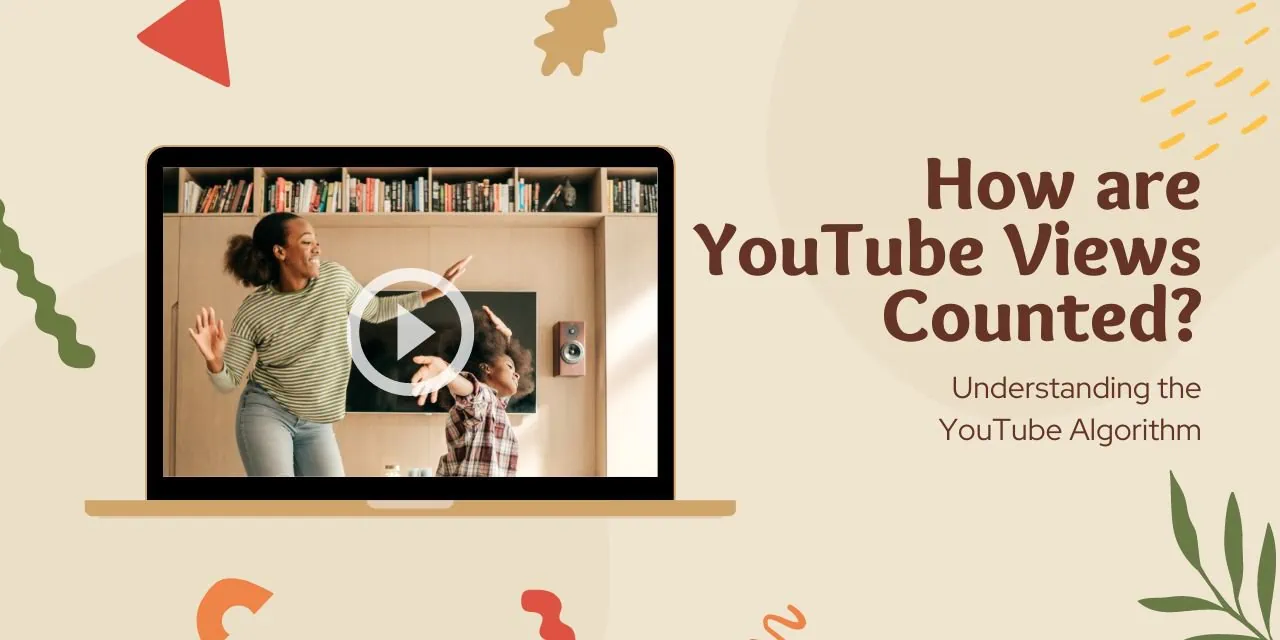
YouTube has long since been the main source of video content on the internet. If you head to the video search engine right now, then you might find suggested videos that have quickly gained millions of views within days.
How is each of these views calculated? Are they all from real people and can the view count be manipulated by artificial intelligence or “bots”?
What does it take to count a view and where do these views come from?
With over 2.6 billion active users and 122 million people visiting the video platform each day, it should be important for marketers to understand when their activity is recorded as a ‘view’.
YouTube has been consistently working on making sure that bots are not being used to manipulate the view count and each one represents an actual human being with intent. So, how are they working on this, and does their system work when calculating views?
What Counts as a YouTube View?
A YouTube view is counted when it meets the following criteria:
- A human viewer initiates a video play by clicking on the play button.
- The video is not marked as SPAM by YouTube’s algorithm.
- The video is played for a minimum of 30 seconds.
In addition to this, the video hits a milestone of 300 views. This number represents the number of views when YouTube places a temporary freeze on the view count to verify that the views are indeed made by real humans and not manipulated by artificial intelligence or “bots”.
What about Repeat Views from the same User?
A repeated view from a user on the same account can be counted as an additional view assuming it does not get flagged by their spam algorithm. While this works for a handful of views, this number does not stack up past 4 or 5 views within a short period of time. After a 24-hour period, the view would be counted again.
What about Views from Your Own Account?
Yes, your own views do count if you are playing your own YouTube content. Keep in mind though that this may only work once or twice and does not continuously stack up.
Is Each View Counted as a Different User?
No. Multiple views may be shared from the same account, device, or user. A view does not mean it is a “unique view” – meaning it was from a different device each time. Although, this metric can be found in the YouTube analytics dashboard.
What Does YouTube Look For when Spotting Fake Views?
YouTube (and other search engines like Google) have gotten pretty clever recently involving fake metrics when people try and cheat the system. There are some major points that will cause the video platform to flag a video.
- Unnatural Multiple Views from a Single Account/Device: Both will be a clear indication of a violation of the YouTube policy.
- Refreshing a Video for Views: This used to be a common tactic used by people to quickly raise the view count when they would simply reload the page after a 30-second view.
- Autoplay: Don’t think a video autoplay will get past the platform. This is another clear indication of possible manipulation.
- Viruses: If a video closely resembles a harmful piece of software or malware, the video platform will quickly shut that down.
How Often Does YouTube Update the View Count?
While this is not public information provided by YouTube, we do know that the view count does not always get added immediately. It may be updated within 24 hours or more.
Using YouTube for Your Marketing Strategy
View count is just one of many different important factors to consider when trying to get a video seen on the platform. There is no doubt that having a large number of views will automatically be an authority metric for new users interested in watching a new video.
For example, a user might search a keyword on YouTube and simply look to see which of the top results have the most views and decide to go with that video as it would be seen as more authoritative.
With that said, even with an extremely high amount of views, you may not be bringing in new users unless you are found on the top few results when people are searching for your target keywords.
This is where the complexity of YouTube search engine optimization (SEO) can come into play. In short, here are some important ranking factors to consider when optimizing a YouTube video:
- View Count
- Keywords in Title and Description
- Relevant and Useful Information in the Description
- Positive Comments
- Eye-Catching Video Cover Photo
YouTube views are just one of many different metrics that can be used to measure the performance of a video and should not be the only analytical reference when making future marketing decisions. It is recommended to also view the unique users and amount of time spent on the video to really gauge and understand how well your video is performing within your target audience.









0 Comments